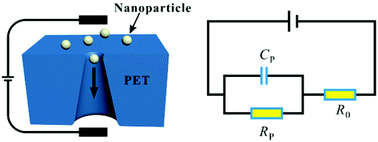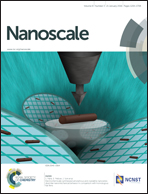A capacitive-pulse model for nanoparticle sensing by single conical nanochannels†
Abstract
Nanochannel based devices have been widely used for single-molecule detection. The detection usually relies on the resistive-pulse model, where the change of the monitored current depends on the physical volumetric blocking of the nanochannel by the analyte. However, this mechanism requires that the nanochannel diameter should not be much larger than the analyte size, because, otherwise, the resultant current change would be too small to detect, and therefore poses particular challenges for the fabrication of nanochannels. To circumvent this issue, in this report, we propose a different mechanism of capacitive-pulse model, where the transport signals can be significantly magnified by the capacitive effect of the nanochannel. We experimentally demonstrate that current pulses with an averaged peak height of 0.87 nA can be achieved for transporting 60 nm nanoparticles through a conical nanochannel device, whereas the traditional resistive-pulse model only predicts one-order-of-magnitude lowered value. With further comprehensive simulation, the dependence of this effect on the nanochannel geometry as well as the surface charge density for both the nanochannel and the analyte is predicted, which would provide important guidance for better designing of the nanochannel-based sensors.


 Please wait while we load your content...
Please wait while we load your content...